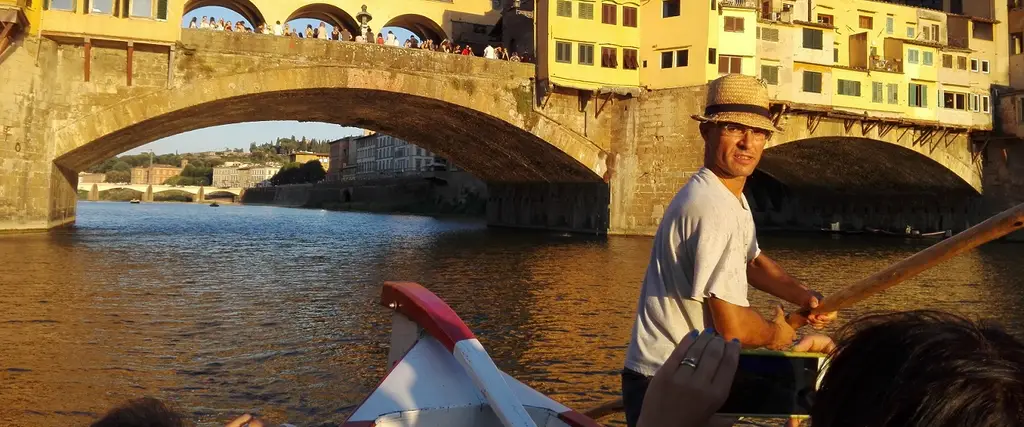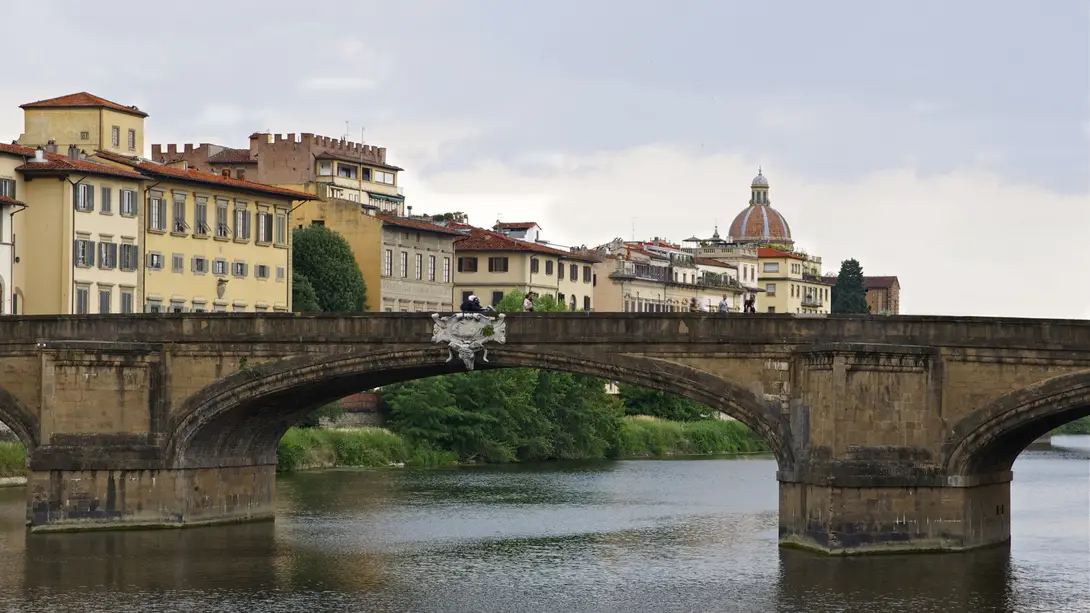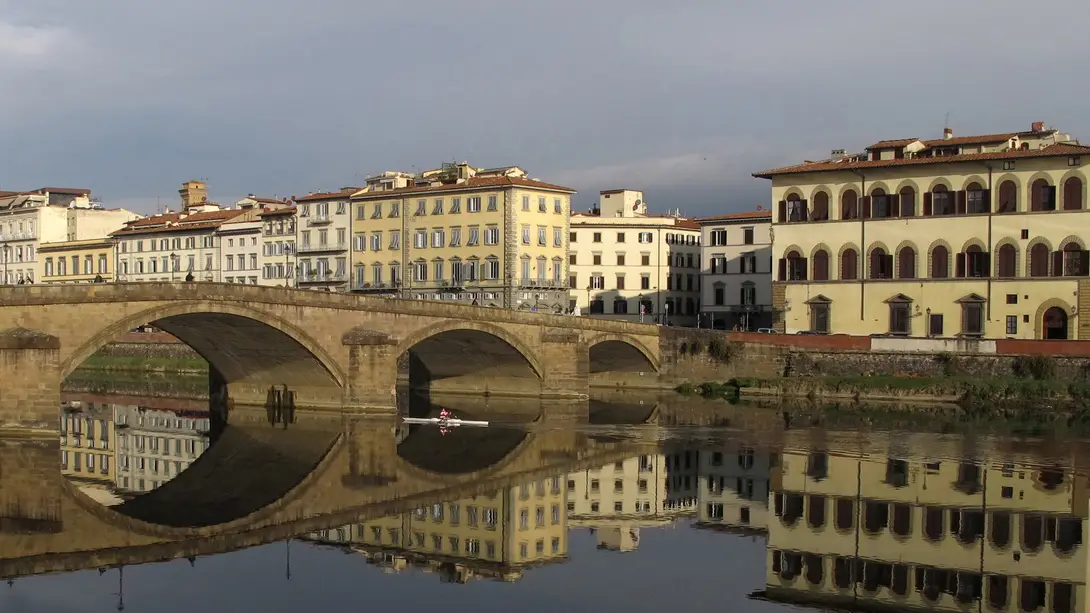
Boat trips with the Renaioli
See Florence from a different point of view, try the unique experience of a boat trip with the Renaioli! The Arno River, which crosses the city of Florence, is not navigable as a whole due to the presence of fishing grounds and artificial differences in depth that make it difficult. However, the traditional “barchetti” (small flat-bottomed boats) can easily cruise on a portion of the river, in the city center, which is also extremely fascinating. Once upon a time, the river and its banks were buzzing with activity, the “barchetti” were used for fishing and transportation, especially to supply sand and gravel for building purposes.
How to try this experience? Just contact the Renaioli Association of Florence! They organize exclusive boat trips from May to September by reservation.
Participants will enjoy the main city attractions: starting from Piazza Mentana, passing under the Ponte Vecchio and the impressive Ponte Santa Trinita, up to Ponte alla Carraia, they will admire lots of beautiful churches and Florentine historic palaces.
The Renaiolo does not only guide the boat with the steering pole, he also tells anecdotes and stories of the past, when men worked on the river and it was a hard life.
It is an unforgettable experience! On the river, the noise of the city fades away, a pleasant breeze blows even on hot days and you can see herons and other water birds. The boat ride takes about 45 minutes.
For more information about prices and reservations, please contact the Associazione Renaioli.
Comune di Firenze
The places
Stages
Ponte Vecchio
Ponte Vecchio, one of Florence's landmarks, stands at the Roman bridge of ancient Florentia. Over the centuries the bridge was rebuilt several times, also due to the numerous floods of the Arno; following one of these (1333) it was decided to build a new, more stable one (with three arches supported by just two pillars, with a series of masonry shops on both sides).
The bridge, built in 1345, probably designed by Taddeo Gaddi, is essentially what we can still admire today. The current goldsmiths' workshops - established in 1593 in place of the old butchers' and fishmongers' shops - make it the 'most precious bridge in the world'. The Corridoio Vasariano, (the suspended passageway allowing the Medici to move easily between Palazzo Vecchio and Palazzo Pitti, through the Uffizi) built by Giorgio Vasari in 1565 on commission of Cosimo I, runs right above these buildings. At the centre of the bridge you can admire the monument to Benvenuto Cellini (Raffaello Romanelli, 1900) and the remains of a 14th-century sundial. In August 1944, during the Nazi retreat, this was the only Florentine bridge that remained intact. The terrible flood of 1966, while causing serious damage, did not compromise its structure.
The views you can enjoy from here are splendid: over the Arno and its bridges, over the city, but also over the surrounding hills
Ponte Santa Trinita
The original bridge was built in1252, and it was named after the nearby church. Like all of Florence's historical bridges, it was rebuilt several times following the numerous floods of the Arno; after the terrible one of 1557, Cosimo I de' Medici commissioned its reconstruction to Bartolomeo Ammannati, who was perhaps inspired by an idea of Michelangelo Buonarroti. Made of pietra forte and decorated with commemorative epigraphs, it was considered the most elegant bridge in Florence, worthy of the grand ducal processions that used to pass over it. The statues at both ends are by Giovanni Caccini (Autumn and Summer), Taddeo Landini (Winter) and Pietro Francavilla (Spring). Destroyed by the Germans during the Second World War, it was rebuilt exactly "as it was and where it was" in 1958.
Ponte alla Carraia
The original bridge was the second one built over the Arno after Ponte Vecchio, hence the name 'new bridge'. It was also known as the "ponte alle Carra": the work was erected at the behest of the Umiliati di Ognissanti fathers, the first Florentine wool entrepreneurs, and was used to divert wagon traffic to the homonymous city Gate of the penultimate circle of walls. Over the centuries it was rebuilt several times following the numerous floods of the Arno, but also in 1304, when it collapsed under the excessive weight of the crowd that had come to attend a show on the river. The bridge, rebuilt by Cosimo I de' Medici, lasted for about four centuries, as it was destroyed – like all others, with the only exception of Ponte Vecchio - in 1944 during the Nazi retreat. The current version dates back to 1951.


